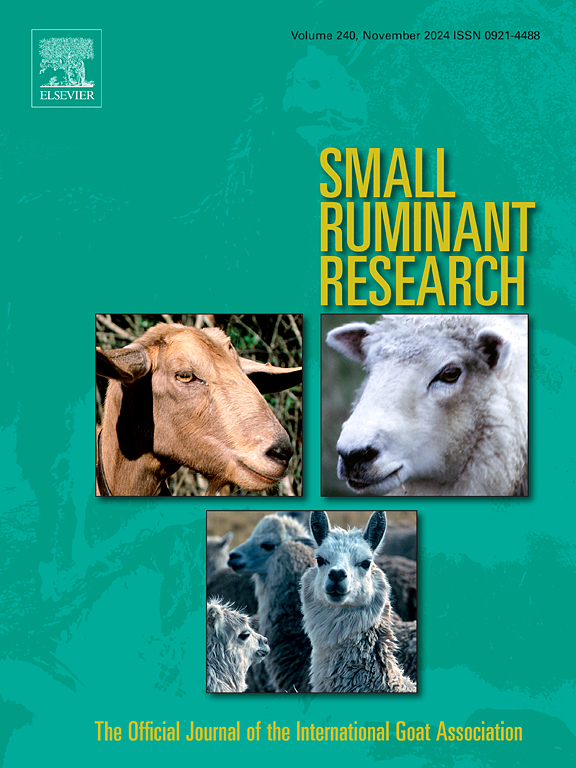对埃塞俄比亚东沃勒加地区山羊生产和养殖的挑战和做法进行评估
IF 1.6
3区 农林科学
Q2 AGRICULTURE, DAIRY & ANIMAL SCIENCE
引用次数: 0
摘要
本研究分析了埃塞俄比亚东沃勒加地区选定地区的山羊生产系统和繁殖程序。数据是通过半结构化问卷和小组谈话从180名受访者中收集的。使用描述性和GLM技术分析数据。主要的农业活动是作物-牲畜混合耕作系统。它在很大程度上依赖于庞大的放牧系统。平均每户有9.66只山羊,大部分用于现金和肉类消费。山羊群结构主要由一岁及以上的成年母山羊组成,在所研究的所有农业生态区中,母山羊的比例高于公山羊。土羊的羊群结构以母羊为主。旱季和雨季的主要饲料来源是天然草地和农作物秸秆,分别占37.53 %和54.26 %。饲料短缺、疾病和干旱是山羊生产的主要制约因素。大多数山羊主人(97.1 %)采用不受管制的交配策略。大多数农民(88.93 %)选择繁殖山羊作为下一代的亲本,体型和毛色是最理想的特征。目前的山羊管理和育种水平不会显著提高生产力和盈利能力。因此,制定管理和遗传开发计划对于提高本地山羊的产量至关重要。本文章由计算机程序翻译,如有差异,请以英文原文为准。
Assessment of challenges and practices utilized for production and breeding goats in East Wollega, Ethiopia
This research analyzes the goat production system and breeding procedures in selected areas of Ethiopia's East Wollega zone. Data were gathered from 180 respondents using a semi-structured questionnaire and group talks. Data were analyzed using descriptive and GLM techniques. The principal agricultural activity is a mixed crop-livestock farming system. It depends largely on huge grazing systems. The average number of goats per family was 9.66, with most kept for cash and meat consumption. The goat flock structure consists predominantly of adult females aged one year and above, with female goats being proportionally higher across all studied agro-ecological zones than male goats. The flock structure of indigenous goats was primarily female. Natural grassland and crop residue were the primary feed supplies in the dry and wet seasons, accounting for 37.53 % and 54.26 %, respectively. Feed scarcity, illnesses, and drought were the primary restraints on goat production. Most goat owners (97.1 %) used an unregulated mating strategy. The majority of farmers (88.93 %) chose breeding goats as parents for the following generation, with body conformation and coat color being the most desirable characteristics. The present level of goat management and breeding practices will not considerably increase productivity and profitability. Therefore, creating management and genetic development programs is crucial for boosting the production of indigenous goats.
求助全文
通过发布文献求助,成功后即可免费获取论文全文。
去求助
来源期刊

Small Ruminant Research
农林科学-奶制品与动物科学
CiteScore
3.10
自引率
11.10%
发文量
210
审稿时长
12.5 weeks
期刊介绍:
Small Ruminant Research publishes original, basic and applied research articles, technical notes, and review articles on research relating to goats, sheep, deer, the New World camelids llama, alpaca, vicuna and guanaco, and the Old World camels.
Topics covered include nutrition, physiology, anatomy, genetics, microbiology, ethology, product technology, socio-economics, management, sustainability and environment, veterinary medicine and husbandry engineering.
 求助内容:
求助内容: 应助结果提醒方式:
应助结果提醒方式:


